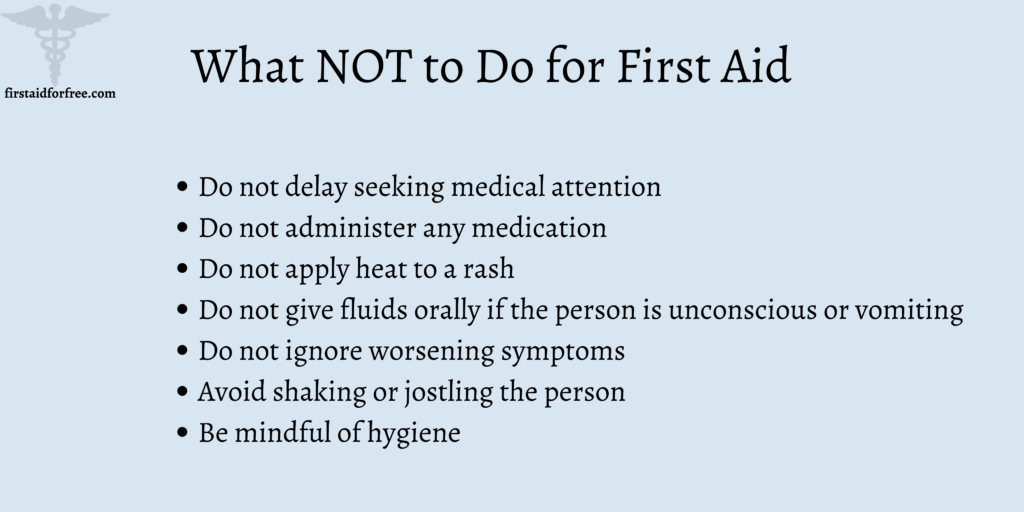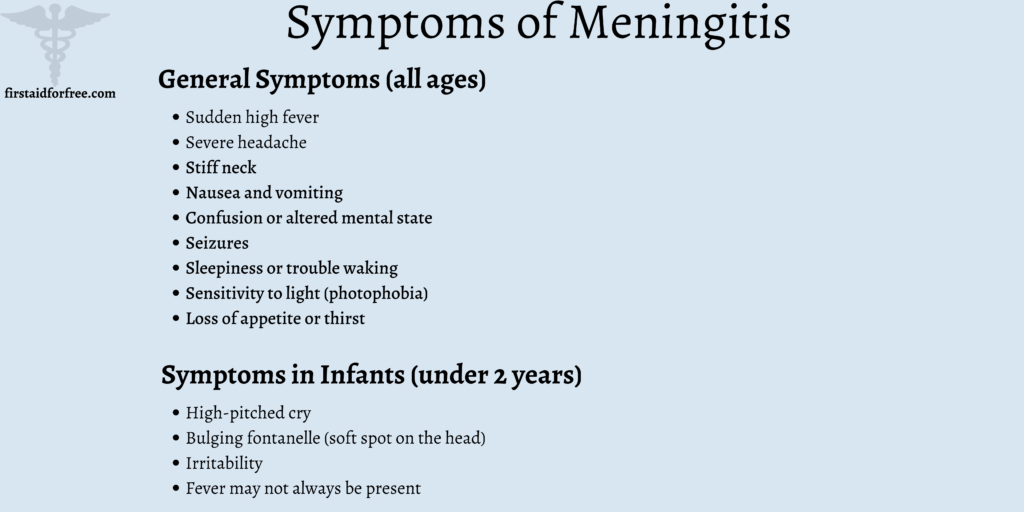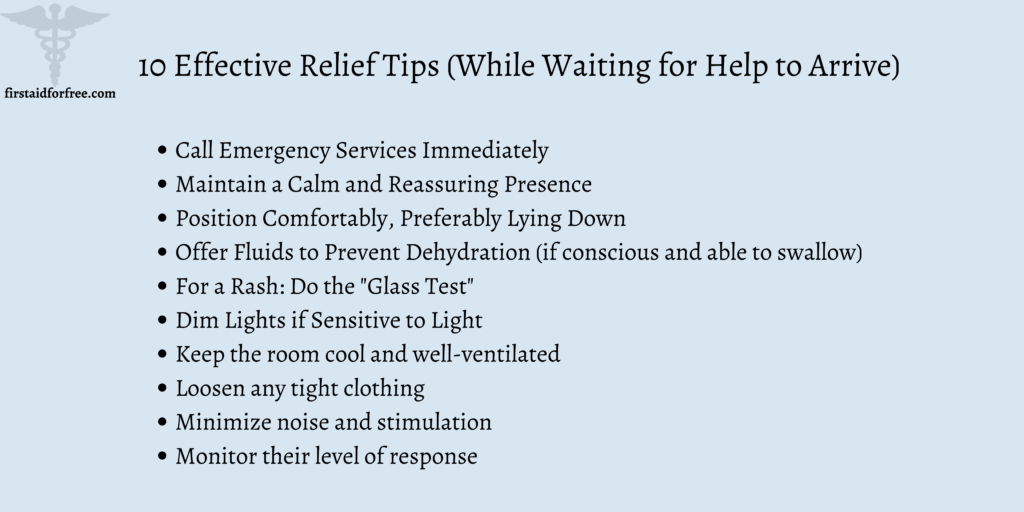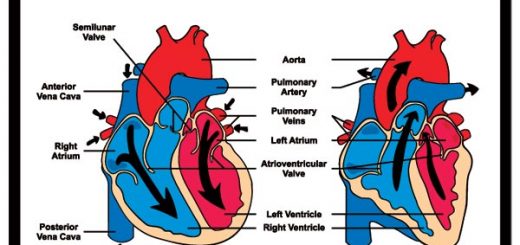First Aid For Meningitis: 10 Effective Relief Tips
Have you ever heard of meningitis? It’s a scary-sounding illness that can cause headache, fever, and a stiff neck.
In this post, we’ll discuss the basics of meningitis in an easy-to-understand way. We will also cover the symptoms, what not to do if you think someone has it, and some simple tips to help them feel better while waiting for medical attention.
Symptoms of Meningitis
Meningitis is an inflammation of the meninges, the protective membranes surrounding the brain and spinal cord. It can be caused by viruses, bacteria, fungi, parasites, or even non-infectious conditions.
Symptoms of meningitis can vary depending on the cause, the age of the person, and how quickly the illness progresses. However, some common signs and symptoms to be aware of include:
General Symptoms (all ages)
- Sudden high fever: This is often one of the first and most prominent symptoms.
- Severe headache: This headache is often described as the worst headache of your life and may feel like a throbbing or constant pain.
- Stiff neck: This is a classic symptom of meningitis and can be diagnosed with a simple test. Lie the person flat on their back and try to gently touch their chin to their chest. If the neck muscles are stiff, they will be unable to do this comfortably and may experience pain.
- Nausea and vomiting: These can occur frequently and with little warning.
- Confusion or altered mental state: This can range from mild confusion and disorientation to drowsiness, lethargy, or even delirium.
- Seizures: Seizures are more common in infants and young children but can occur in anyone with meningitis.
- Sleepiness or trouble waking: The person may be unusually tired and difficult to arouse.
- Sensitivity to light (photophobia): Bright lights may cause discomfort or even pain.
- Loss of appetite or thirst: This can lead to dehydration, especially in young children.
Symptoms in Infants (under 2 years)
- High-pitched cry: Infants with meningitis may cry more frequently and with a higher-pitched sound than usual.
- Bulging fontanelle (soft spot on the head): The soft spot on an infant’s head may appear swollen or bulging due to increased pressure in the skull.
- Irritability: Infants may be fussier and more difficult to console than usual.
- Fever may not always be present: In some cases, infants with meningitis may not have a high fever.
If you suspect someone has meningitis, don’t wait for all the symptoms to appear. Seek immediate medical attention for the best chance of a full recovery.
What NOT to Do for First Aid

Meningitis is a serious medical emergency. While waiting for help to arrive, there are some things you should definitely avoid doing:
- Do not delay seeking medical attention: This is the most crucial point. Early diagnosis and treatment are critical for preventing serious complications from meningitis, including brain damage, hearing loss, and learning disabilities. Even if you’re unsure, seek medical help immediately.
- Do not administer any medication: Meningitis can mimic other illnesses, and some medications might mask important symptoms or interfere with proper diagnosis. Leave all medical decisions to qualified healthcare professionals.
- Do not apply heat to a rash: If a rash is present, applying heat (heating pads, warm baths) can worsen it. Meningitis can cause a specific type of rash that doesn’t fade under pressure (unlike some other rashes). Avoid tampering with the rash in any way.
- Do not give fluids orally if the person is unconscious or vomiting: This can lead to aspiration (choking on fluids).
- Do not ignore worsening symptoms: If symptoms worsen while waiting for help, don’t hesitate to call emergency services again.
- Avoid shaking or jostling the person: This can be uncomfortable for someone experiencing a severe headache and stiff neck.
- Be mindful of hygiene: Meningitis can be contagious in some cases (especially viral meningitis). Wash your hands thoroughly after any contact with the person’s bodily fluids (vomit, saliva, etc.)
10 Effective Relief Tips (While Waiting for Help to Arrive)
While waiting for emergency services to arrive, there are some steps you can take to help the person with suspected meningitis feel more comfortable and potentially prevent complications:
1. Call Emergency Services Immediately
This remains the top priority. Don’t wait for symptoms to worsen or for all symptoms to appear before calling for help. The sooner medical attention is received, the better the chance for a full recovery.
2. Maintain a Calm and Reassuring Presence
A person with meningitis might be experiencing significant discomfort and fear. Stay calm and speak in a reassuring tone. Let them know you’ve called for help and that they’re not alone.
3. Position Comfortably, Preferably Lying Down
Lying down can help reduce discomfort from a headache and neck stiffness. Allow the person to find a comfortable position, offering pillows for support if needed.
4. Offer Fluids to Prevent Dehydration (if conscious and able to swallow)
Dehydration can worsen symptoms. If the person is conscious and able to swallow comfortably, offer small sips of cool water. Avoid forcing fluids if they are nauseated or vomiting.
5. For a Rash: Do the “Glass Test”
If a rash is present, perform the “glass test” to see if it fades under pressure. Press a clear glass firmly against the rash. If the rash doesn’t fade when you press it, this might be a sign of meningitis and requires immediate medical attention.
Avoid rubbing or manipulating the rash in any way.
6. Dim Lights if Sensitive to Light
Meningitis can cause sensitivity to light (photophobia). If the person seems uncomfortable with bright lights, dim the lights in the room or offer an eye mask for comfort.
7. Keep the room cool and well-ventilated
This can help regulate the person’s body temperature, especially if they have a fever.
8. Loosen any tight clothing
This can improve comfort, especially around the neck and head.
9. Minimize noise and stimulation
A calm and quiet environment can help the person rest and feel less overwhelmed.
10. Monitor their level of response
Pay attention to how they are responding to your questions and surroundings. If their level of consciousness seems to be decreasing, call emergency services again.
FAQs
What should I do if I suspect someone has meningitis?
Call emergency services immediately (911 in the US). Don’t wait for all symptoms to appear or for them to worsen. Early intervention is crucial.
What can I do to help while waiting for help?
Stay calm and reassure the person. Position them comfortably, preferably lying down. Offer fluids (if conscious and able to swallow). Dim lights if sensitive to light.
What shouldn’t I do?
Don’t give any medication. Don’t apply heat to a rash. Don’t ignore worsening symptoms. Let medical professionals take charge of treatment.
Conclusion
We hope this article was helpful and you understood the symptoms and first aid for meningitis. It is a severe health condition, and you must seek immediate medical attention for early treatment.
Do not do anything without proper information. Wait for medical professionals to arrive and take care of the person in the meantime.







